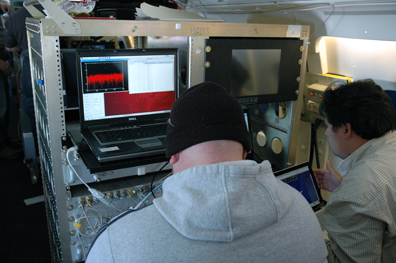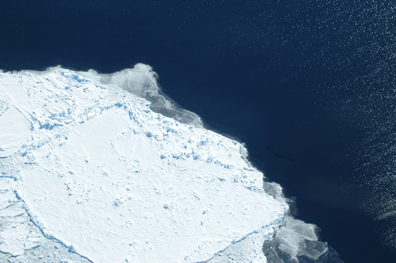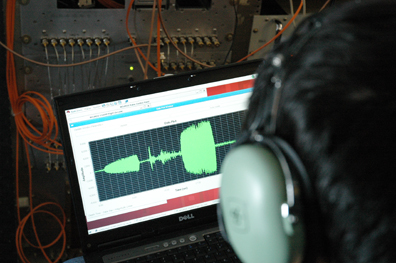
Turning Antarctic data into gold
The glamour of flying over Antarctica with NASA isn’t without its costs.
The Kansas University team from the National Science Foundation Center for Remote Sensing of Ice Sheets has been collecting “frequent flyer miles” that won’t translate into any personal perks down the line. Instead, those miles spent in the air translate into data. … Lots of data. … Mountains of data. … And more work.
Those raw bits of information collected by the three KU radars in use during NASA’s Operation Ice Bridge must then be turned into meaningful details.
“We launch a radio wave. … The wave propagates at the speed of light down to the interface (where two different materials meet), an echo comes back,” said Chris Allen, associate director of technology for CReSIS and KU professor of electrical engineering and computer science. “We can capture that echo, and digitize that – post-process that – to learn all kinds of scientific information.”
That’s the alchemy of signal processing.

During one 11-hour flight over the Antarctic Amundsen Sea, the CReSIS team collected more than 330 gigabytes of data from the SNOW radar and 256 gigs from the Ku-band system. That would be the equivalent of more than 100 million short plain text emails in your inbox. It’s a lot to read. And there are 13 more flights to go.

“These are all, I would put them in the class of pioneering instruments, giving the scientists new capability,” Allen said. “The MCoRDS (Multi-channel Coherent Radar Depth Sounder) allows us to measure the thickness of the ice. It’s the only instrument on the plane that allows us to measure directly the thickness of the ice.” The other radars — altimeters — are going to give scientists data they’ve needed but haven’t been able to get in the past, Allen said.

The KU team is also working to read that raw data quickly and convert it into research gold.
“The near real-time turnaround of practically science quality data from our systems is something that we’re pushing. We’ve demonstrated a preliminary capability last April and we are advancing that capability now through the support of folks from Polar Grid at Indiana University.”
For the KU engineering graduate students, all research assistants at CReSIS, that goal translates into several all-nighters of data processing. Being highly adaptive, the students have already mastered the art of the powernap, grabbing an hour or two of sleep whenever they can, including the overseas flight from Antarctica back to Punta Arenas, Chile.
So even if the students and researchers can’t cash in their thousands of NASA frequent flyer miles, they are at least catching some Zzzz.

